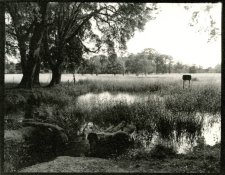These are two of the 5 prints I made on ART 300.

and

Based on your experience, is it worth trying to reduce the highlights of the first one. It seems that if I try it will not be easy to make it looks nicer and I will end up trhoughing many paper out.
The second one seems to be easier but I wonder if doing so, the hight lights behind the tree leaves will not match on the highlights of the open sky, which may look odd.
What would you do?

and

Based on your experience, is it worth trying to reduce the highlights of the first one. It seems that if I try it will not be easy to make it looks nicer and I will end up trhoughing many paper out.
The second one seems to be easier but I wonder if doing so, the hight lights behind the tree leaves will not match on the highlights of the open sky, which may look odd.
What would you do?












